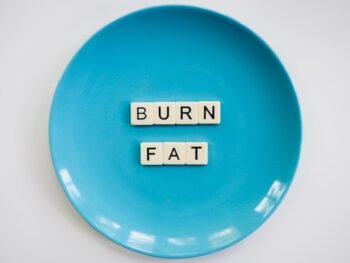Are you torn between cardio and weights when it comes to weight loss? Look no further, as this article from CNN provides insights on the ultimate weight loss battle: cardio vs. weights. Authored by Selene Yeager, the article dives into the age-old debate and explores which is better for shedding those extra pounds. With a friendly tone and informative content, this article aims to help you make an informed decision on your weight loss journey.

Find the nearest Kumdo Dojang Near You
Overview
Introduction
When it comes to weight loss, there is an ongoing debate about the most effective approach: cardio or weightlifting? Both forms of exercise have their own unique benefits, but finding the right balance between the two is essential for achieving optimal results. In this article, we will dive into the benefits of cardio and weightlifting, the role of diet in weight loss, the research behind cardio vs. weights, considerations for beginners, and how to tailor workouts for weight loss. By understanding the advantages of both cardio and weights and how they complement each other, you can create a personalized fitness routine that maximizes your weight loss journey.
The ongoing debate
The question of whether cardio or weightlifting is better for weight loss has sparked a heated debate among fitness enthusiasts and experts. Some argue that cardio is the key to burning calories and shedding pounds, while others believe that weightlifting is the secret to boosting metabolism and transforming body composition. While both sides have valid arguments, the truth lies in understanding how these two forms of exercise affect the body and how they can be combined for optimal results.
Understanding weight loss
Before delving into the benefits of cardio and weightlifting, it's important to understand the basics of weight loss. Weight loss occurs when you burn more calories than you consume. This is known as a caloric deficit. While exercise is an important component of weight loss, it must be combined with a balanced diet to achieve sustainable results. The combination of exercise and proper nutrition is crucial for not only losing weight but also maintaining overall health and well-being.
The Benefits of Cardio
Increases calorie burn
One of the primary benefits of cardio exercise is its ability to increase calorie burn. Cardiovascular workouts, such as running, cycling, or swimming, elevate your heart rate, causing your body to burn calories at a higher rate. This means that during and even after your cardio session, you continue to burn calories. Regular cardio workouts help create the necessary caloric deficit for weight loss and contribute to overall calorie expenditure.
Improves cardiovascular health
Cardio exercise is well-known for its positive impact on cardiovascular health. Regular aerobic workouts strengthen the heart muscle and improve the efficiency of the cardiovascular system. This results in lower resting heart rate, improved blood flow, and reduced risk of heart disease, high blood pressure, and stroke. Incorporating cardio into your weight loss journey not only helps you shed pounds but also improves your overall well-being.
Boosts metabolism
Cardio exercises play a significant role in boosting metabolism. When you engage in cardiovascular activities, your body's energy demands increase, causing an increase in metabolic rate. This heightened metabolic rate allows for more efficient calorie burning throughout the day, even when you're at rest. The combination of cardiovascular exercise and an increased metabolic rate is a powerful tool for weight loss.
Increases endurance
Endurance is a crucial component of any exercise routine. Cardio workouts focus on improving endurance by challenging your body's ability to sustain prolonged physical activity. Whether you're training for a marathon or simply trying to keep up with everyday tasks, increased endurance will make a significant difference in your overall fitness level. Regular cardio exercise not only enhances weight loss but also improves your ability to handle physical exertion.
The Benefits of Weightlifting
Builds muscle mass
Weightlifting, also known as strength training or resistance training, is a powerful tool for building muscle mass. When you lift weights, your muscles are subjected to resistance, which causes them to adapt and grow stronger over time. Building lean muscle mass through weightlifting is beneficial for weight loss as muscle burns more calories at rest than fat. Additionally, developing muscle mass gives your body a toned and sculpted appearance.
Increases metabolic rate
Similar to cardio exercise, weightlifting also increases metabolic rate. Muscle tissue is metabolically active, meaning it requires more energy (calories) to maintain compared to fat tissue. By increasing muscle mass through weightlifting, you can raise your resting metabolic rate, allowing you to burn more calories even when you're not actively exercising. This metabolic boost is beneficial for weight loss as it helps create a greater caloric deficit.
Improves bone health
Weightlifting has significant benefits for bone health. Resistance training places stress on your bones, which signals your body to increase bone density and strength. This is especially important for women, as they are more prone to developing osteoporosis as they age. By incorporating weightlifting into your fitness routine, you can improve bone health and reduce the risk of fractures and other bone-related issues.
Enhances body composition
Weightlifting is known for its ability to enhance body composition. While weight loss primarily focuses on shedding pounds, weightlifting helps shape and sculpt your body. By increasing lean muscle mass and reducing body fat, weightlifting can improve your overall appearance. This is especially important for individuals who want to achieve a toned and defined physique rather than simply losing weight.
The Role of Diet in Weight Loss
Caloric deficit
Regardless of whether you focus on cardio or weightlifting, a caloric deficit is essential for weight loss. To achieve a caloric deficit, you must consume fewer calories than your body burns. This creates an energy imbalance, causing your body to tap into its fat stores for fuel. It's important to note that weight loss should be gradual and sustainable, typically aiming for a moderate caloric deficit of 500-1000 calories per day. This allows for healthy and sustainable weight loss of about 1-2 pounds per week.
Importance of protein
When it comes to diet and weight loss, protein plays a crucial role. Protein is the building block of lean muscle mass, and consuming adequate amounts is essential for muscle growth and repair. Additionally, protein has a high satiety effect, meaning it keeps you feeling fuller for longer, reducing the likelihood of overeating. Including protein-rich foods, such as lean meats, poultry, fish, eggs, legumes, and dairy products, in your diet helps support weight loss and overall health.
Balanced nutrition
While it's important to focus on a caloric deficit and adequate protein intake, it's equally crucial to maintain a balanced and nutritious diet. This means consuming a variety of fruits, vegetables, whole grains, and healthy fats. These foods provide essential nutrients, vitamins, and minerals that support overall health and well-being. Additionally, by adopting a balanced approach to nutrition, you can avoid nutrient deficiencies and maintain optimal energy levels for your workouts.

Combining Cardio and Weights
The synergy effect
While both cardio and weightlifting have their individual benefits, combining the two can yield even greater results. Cardio provides the calorie-burning and cardiovascular benefits, while weightlifting builds muscle mass and boosts metabolism. By incorporating both forms of exercise into your fitness routine, you create a synergy effect where each workout enhances the effectiveness of the other. This combination not only promotes weight loss but also improves overall fitness and body composition.
Maximizing calorie burn
When it comes to weight loss, maximizing calorie burn during workouts is essential. By including cardio exercises in your routine, you can burn a significant number of calories. The intensity and duration of your cardio workouts will dictate the level of calorie burn. High-intensity interval training (HIIT), which involves short bursts of intense exercise followed by periods of rest, has been shown to be particularly effective for calorie burn and weight loss. Combining cardio with weightlifting creates a balanced approach that maximizes calorie burn throughout your entire fitness session.
Optimizing overall fitness
In addition to weight loss, optimizing overall fitness should also be a goal. Incorporating both cardio and weightlifting into your routine helps improve various aspects of fitness, including cardiovascular endurance, muscular strength, flexibility, and balance. By diversifying your workouts, you can develop a well-rounded fitness level that supports your weight loss journey and promotes overall health and well-being.
Cardio vs. Weights: The Research
Comparing weight loss
Numerous research studies have examined the impact of cardio and weightlifting on weight loss. While some studies suggest that cardio may lead to more significant initial weight loss, others indicate that weightlifting can be equally effective in promoting long-term weight loss and body composition changes. It's important to note that individual differences, such as genetics, metabolism, and exercise intensity, can influence weight loss outcomes. Ultimately, the choice between cardio and weightlifting may come down to personal preference and the ability to maintain a consistent exercise routine.
Effect on metabolism
Both cardio and weightlifting have positive effects on metabolism, although they work in different ways. Cardio workouts increase energy expenditure during exercise and can temporarily elevate metabolic rate. On the other hand, weightlifting builds muscle mass, which raises resting metabolic rate in the long term. Some research suggests that weightlifting may have a more significant impact on metabolism, as the added muscle mass contributes to a higher daily calorie burn. Ultimately, a combination of cardio and weightlifting can provide the most comprehensive boost to metabolism.
Long-term sustainability
Sustainability is a crucial consideration when it comes to choosing the best exercise approach for weight loss. While cardio may seem more accessible and straightforward, weightlifting offers long-term sustainability due to its ability to build muscle mass and increase metabolic rate. Additionally, weightlifting provides more variation in workouts, allowing for the progression and adaptation necessary to maintain enthusiasm and avoid plateaus. Ultimately, finding a balance between cardio and weightlifting that aligns with your preferences and lifestyle is key to long-term sustainability.

Finding the Right Balance
Individual preferences
When deciding between cardio and weightlifting, it's important to consider your personal preferences. Some individuals may enjoy the challenge and variety of cardio workouts, while others may prefer the strength and empowerment that weightlifting provides. Choosing an exercise approach that aligns with your preferences increases the likelihood of adherence and long-term commitment to your weight loss journey.
Fitness goals
Your fitness goals should also play a role in determining the right balance between cardio and weightlifting. If your primary objective is weight loss, a combination of cardio and weightlifting may be optimal. However, if you have specific goals, such as improving cardiovascular endurance or building muscle mass, you may adjust the balance accordingly. Tailoring your workout routine to your specific goals ensures that you make progress in the areas that matter most to you.
Time commitment
Another crucial factor in finding the right balance is the time commitment required for each type of exercise. Cardio workouts tend to be shorter in duration, allowing for quick calorie burn and time efficiency. On the other hand, weightlifting sessions may require more time due to the need for proper form and adequate rest between sets. Considering your schedule and available time will help you determine the best balance between cardio and weightlifting that you can realistically maintain.
Considerations for Beginners
Starting with cardio
For beginners, starting with cardio exercise can be an excellent way to ease into a fitness routine. Cardio workouts are generally less intimidating and require minimal equipment, making them accessible to individuals of all fitness levels. Walking, cycling, or swimming are great options for cardio beginners. Starting with low-intensity cardio sessions and gradually increasing duration and intensity is a safe and effective approach for building cardiovascular endurance and preparing your body for more challenging workouts.
Gradually introducing weights
Once you have established a cardio routine and feel comfortable with your fitness level, gradually introducing weights can further enhance your weight loss journey. Begin with light weights and focus on proper form and technique to prevent injury. Resistance machines or bodyweight exercises, such as squats and push-ups, are excellent options for beginners. As you gain confidence and strength, you can gradually increase resistance and expand your weightlifting repertoire.
Seeking professional guidance
If you are new to fitness or unsure about how to incorporate cardio and weightlifting into your routine, seeking professional guidance can be beneficial. A personal trainer or fitness instructor can provide expert advice, develop a customized workout plan, and ensure that you perform exercises correctly and safely. They can also help you set realistic goals, track your progress, and adjust your routine as needed. Professional guidance is an investment in your fitness journey that can lead to more efficient and effective results.
Tailoring Workouts for Weight Loss
HIIT cardio workouts
High-Intensity Interval Training (HIIT) is a popular form of cardio exercise that is highly effective for weight loss. HIIT workouts involve short bursts of intense exercise followed by brief recovery periods. This interval-based approach boosts calorie burn, elevates heart rate, and improves cardiovascular fitness. HIIT workouts can be performed with various exercises, such as sprinting, jumping jacks, or burpees. Incorporating HIIT into your cardio routine helps maximize calorie burn and enhances weight loss.
Strength training circuits
Strength training circuits combine weightlifting exercises with minimal rest between sets. This form of training keeps your heart rate elevated, providing both cardiovascular and strength benefits. Strength training circuits typically involve compound exercises that work multiple muscle groups simultaneously, such as squats, lunges, and push-ups. By incorporating strength training circuits into your routine, you can build lean muscle mass, elevate metabolic rate, and support weight loss.
Incorporating variation
To prevent plateaus and maintain motivation, it's essential to incorporate variation into your workouts. This includes changing exercises, intensity levels, and workout formats. For cardio, consider trying different types of workouts, such as cycling, swimming, or dance classes. For weightlifting, switch up your exercises, rep ranges, or the order of your workouts. Adding variation challenges your body in new ways, prevents boredom, and keeps your weight loss journey exciting and fulfilling.
Conclusion
The ideal weight loss approach
When it comes to weight loss, there is no one-size-fits-all approach. The ideal weight loss strategy involves a combination of cardio, weightlifting, and a balanced diet. Cardio exercise increases calorie burn, improves cardiovascular health, boosts metabolism, and enhances endurance. Weightlifting builds muscle mass, increases metabolic rate, improves bone health, and enhances body composition. Combining these two forms of exercise creates a synergy effect that optimizes overall fitness and supports sustainable weight loss.
Personalization and adaptation
Finding the right balance between cardio and weights requires personalization and adaptation. Understanding your preferences, fitness goals, and time commitment helps determine the optimal ratio between the two forms of exercise. Beginners can start with cardio and gradually introduce weights, seeking professional guidance when necessary. Tailoring workouts for weight loss involves incorporating HIIT cardio workouts, strength training circuits, and incorporating variation to prevent plateaus. By personalizing your fitness routine and adapting as needed, you can achieve lasting weight loss and overall fitness success.















